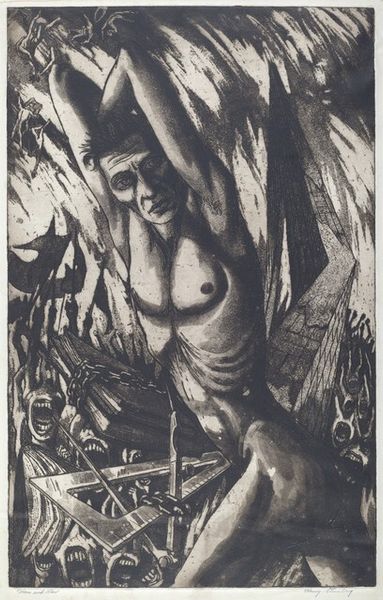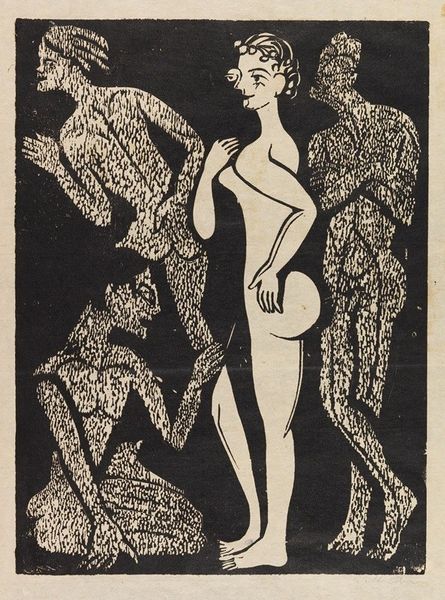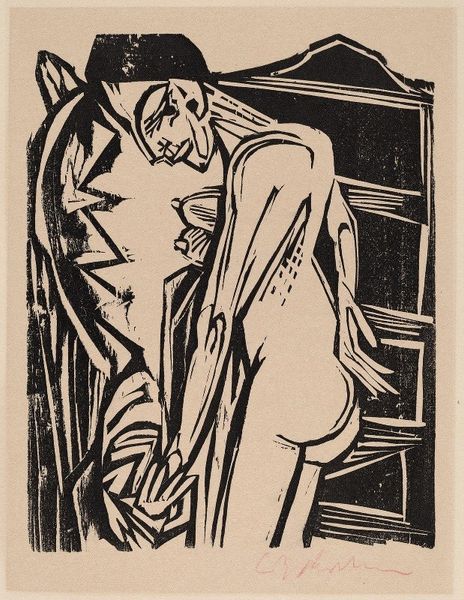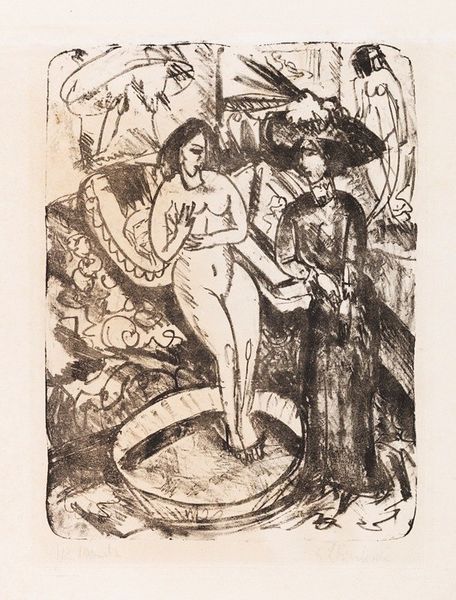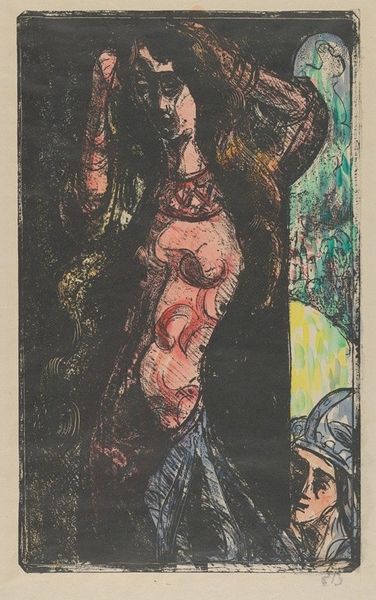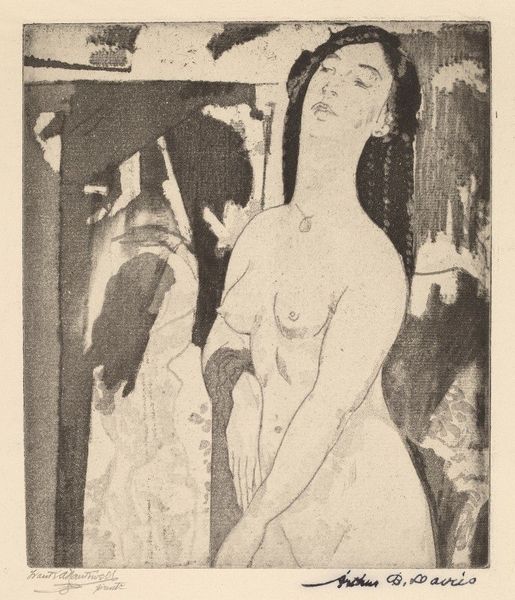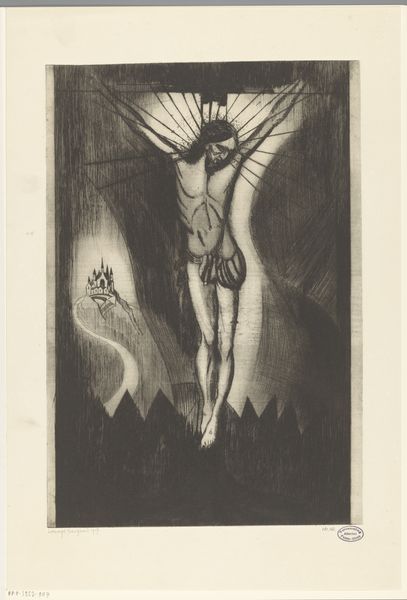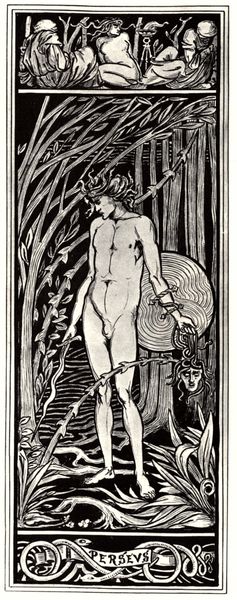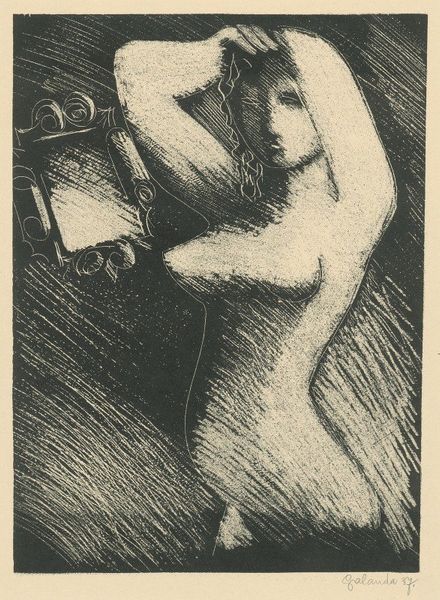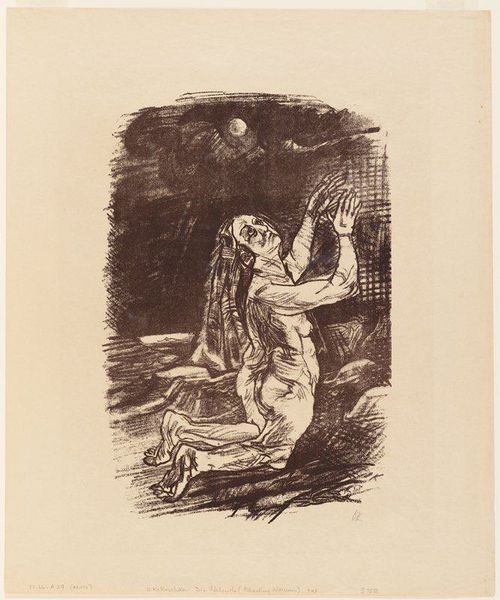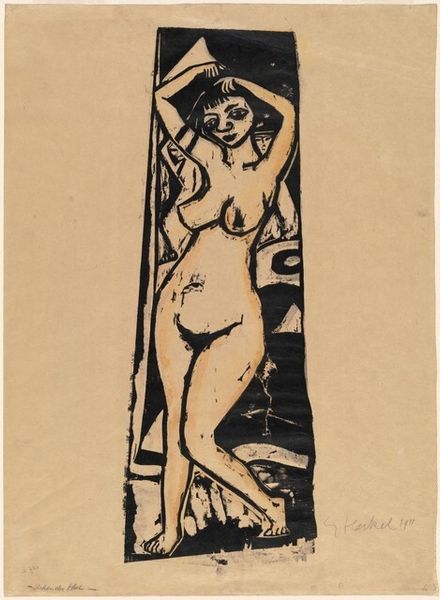
print, woodcut
#
narrative-art
# print
#
caricature
#
figuration
#
expressionism
#
woodcut
#
history-painting
Dimensions: 12 7/8 x 8 9/16 in. (32.7 x 21.75 cm) (image)16 11/16 x 10 1/4 in. (42.39 x 26.04 cm) (sheet)
Copyright: No Copyright - United States
Editor: Here we have Benjamin Miller’s woodcut, “Judith in the Tent of Holofernes,” created in 1928. It's currently housed at the Minneapolis Institute of Art. There’s a real intensity in the stark contrast between light and shadow that brings to mind the weightiness of the scene depicted. What social commentary do you think Miller is offering through this print? Curator: That’s an astute observation. The sharp contrast contributes to its dramatic impact, certainly. Considering the historical context, this work emerges during the Interwar period. Can you consider how Miller’s woodcut of Judith fits into debates around representation, power and the role of women after the first World War? Editor: So you are saying that, Miller’s portrayal of Judith might reflect changing societal views on gender roles after World War I, potentially celebrating female empowerment through a narrative lens? Curator: Precisely! Miller's choice of this biblical subject, Judith, a figure known for her courage and decisiveness in a moment of crisis, aligns with broader discussions about the ‘New Woman’ and women's active roles in shaping historical narratives and political agendas. What's interesting to me is how this artwork could challenge established ideas around female passivity in artistic representations and cultural memory. Editor: Interesting. It’s more than just a biblical scene, but something of an artistic declaration related to gendered representation within public spheres! Curator: Exactly. In focusing on Miller’s historical context, we see that images can function as participants and as commentators, shaping social values during moments of uncertainty. Editor: I never considered art’s ability to influence those values on such a broad, public scale! It certainly does recontextualize my perception of the image.
Comments
minneapolisinstituteofart about 2 years ago
⋮
While his fellow printmakers were depicting the American scene, Benjamin Miller was pursuing agonizingly expressive subjects from the Bible. This Judith gives us a frank acknowledgement of her sexual power, but also hints at the psychological cost of her deed. The print's raw emotionalism is enhanced by the actual wood grain incorporated into the background design.
Join the conversation
Join millions of artists and users on Artera today and experience the ultimate creative platform.
